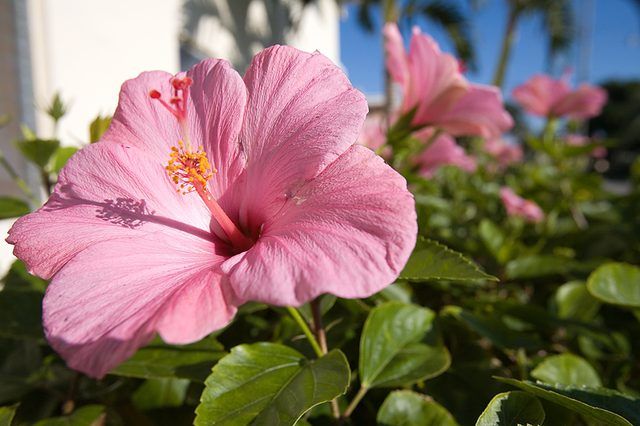Bulbs
Flower Basics
Flower Beds & Specialty Gardens
Flower Garden
Garden Furniture
Garden Gnomes
Garden Seeds
Garden Sheds
Garden Statues
Garden Tools & Supplies
Gardening Basics
Green & Organic
Groundcovers & Vines
Growing Annuals
Growing Basil
Growing Beans
Growing Berries
Growing Blueberries
Growing Cactus
Growing Corn
Growing Cotton
Growing Edibles
Growing Flowers
Growing Garlic
Growing Grapes
Growing Grass
Growing Herbs
Growing Jasmine
Growing Mint
Growing Mushrooms
Orchids
Growing Peanuts
Growing Perennials
Growing Plants
Growing Rosemary
Growing Roses
Growing Strawberries
Growing Sunflowers
Growing Thyme
Growing Tomatoes
Growing Tulips
Growing Vegetables
Herb Basics
Herb Garden
Indoor Growing
Landscaping Basics
Landscaping Patios
Landscaping Plants
Landscaping Shrubs
Landscaping Trees
Landscaping Walks & Pathways
Lawn Basics
Lawn Maintenance
Lawn Mowers
Lawn Ornaments
Lawn Planting
Lawn Tools
Outdoor Growing
Overall Landscape Planning
Pests, Weeds & Problems
Plant Basics
Rock Garden
Rose Garden
Shrubs
Soil
Specialty Gardens
Trees
Vegetable Garden
Yard Maintenance
How to Care for Outdoor Hibiscus
How to Care for Outdoor Hibiscus. Honored as Hawaii's state flower, the hibiscus is a widely known and much loved flowering plant that naturally thrives in tropical and sub-tropical climates. Hibiscus are naturally hardy outdoor plants in warm-weather areas such as south Florida, Hawaii, southern California and other locales where temperatures...

Honored as Hawaii's state flower, the hibiscus is a widely known and much loved flowering plant that naturally thrives in tropical and sub-tropical climates. Hibiscus are naturally hardy outdoor plants in warm-weather areas such as south Florida, Hawaii, southern California and other locales where temperatures constantly remain above 50 degrees Fahrenheit. In other locations, hibiscus can be grown outdoors during the summer months with proper care.
Things You'll Need
Hibiscus plant
5 to 10-gallon container/planter (plastic, terra cotta, clay or other material of your preference)
Mix of three parts potting soil to one part sand, or:
Mix of equal parts sphagnum peat moss, vermiculite and perlite
Water
Potassium-rich fertilizer
Start your hibiscus in a container or in the ground in a partly shaded area to gradually expose it to the sun without too much strain. As it grows accustomed to direct sunlight, gradually move it to a mostly sunny location. Easing your new hibiscus into its sunny location provides the best care for the plant, especially for its glossy leaves which can become dry or burnt if exposed to full sun immediately. Experts note that the ideal sun conditions for hibiscus growth and flowering include two to four hours of direct sunlight with the rest of the time in partial shade.
Select containers that are at least as wide as they are deep, because the plant's fine feeder roots grow and spread out horizontally from the plant. Hibiscus need good drainage, so buy a container or planter with either bottom or side drainage holes.
Use light soil. A combination of 80 percent potting mix and 20 percent sand is commonly used for potted hibiscus. A thin layer of mulch can also be added to the top of the soil mixture to hold in moisture, especially during the hottest days of summer.
Water hibiscus regularly, especially during hot weather, but avoid providing too much water as the roots of the plant should not sit in water or extremely wet soil. Hibiscus leaves will droop when the plant is not getting enough water. A good rule of thumb when deciding on whether your hibiscus needs water is to stick your finger down into the soil around the plant to about a depth of one half an inch. If the soil is dry, the hibiscus should be given water.
To produce big, beautiful flowers, hibiscus require regular fertilizing. A fertilizer high in potassium is best, and garden centers offer fertilizers specially made for hibiscus. Fertilize according to directions. Do not over fertilize, and always water your hibiscus after fertilizing so as not to burn the plant or its leaves.
Bring outdoor hibiscus indoors during the cooler seasons to survive. Hibiscus planted directly in the ground can be potted and brought in. As air temperatures begin to drop below 40 to 50 degrees F, it is best to move your hibiscus in to avoid stressing the plant. Indoors, the hibiscus should be kept in a warm, sunlit location until sustained warm weather permits it being moved back outdoors.